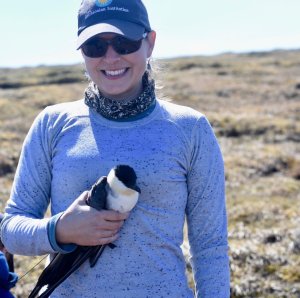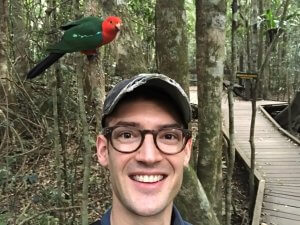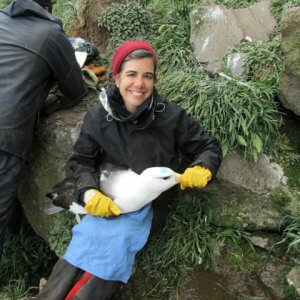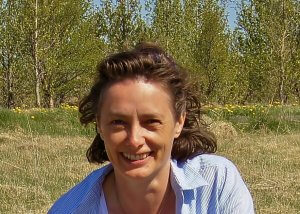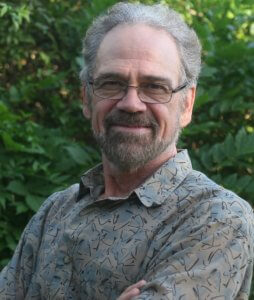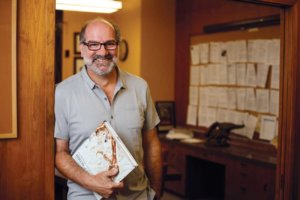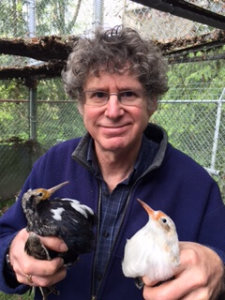Upcoming Programs
We are pleased to announce that Nuttall monthly meetings are back in person at Harvard.
Past Programs
(NOC members, login to view and listen to presentations)
Autumn-Lynn Harrison – Uniting across hemispheres to discover unknown migratory pathways of birds: Advancing scientific knowledge and translating to conservation
Dr. Autumn-Lynn Harrison is a research ecologist at the Smithsonian Migratory Bird Center and is the program manager of the Migratory Connectivity Project Join Dr. Autumn-Lynn Harrison, a marine ecologist with the Smithsonian Migratory Bird Center, as she shares results from two hemispheric-scale tracking projects, and how the data have been translated into global policy…
Read MoreDaniel Field – The Dinosaur Resurrection: How the Demise of the Dinosaurs Paved the Way for the Origin of Modern Birds
Daniel Field is a lecturer in the Earth Sciences Department at Cambridge, and the Strickland Curator of Ornithology at the University of Cambridge Museum of Zoology Modern birds are the most diverse group of terrestrial vertebrate animals, comprising nearly 11,000 living species. They inhabit virtually every corner of the modern world, and exhibit a mind-boggling…
Read MoreBarbara Vickery and Scott Weidensaul – Birds of Maine: A Life’s Legacy
Barbara Vickery and Scott Weidensaul co-edited Birds of Maine Written by the late Peter Vickery in cooperation with a distinguished team of co-authors and editors, the recently published Birds of Maine is the first comprehensive overview of Maine’s rich birdlife in 70 years. Peter, elected to NOC in 1984, spent much of his career focusing…
Read MoreJonathan Slaght – Owls of the Eastern Ice: Blakiston’s Fish Owl Conservation in Russia
Jonathan Slaght is the Russia & Northeast Asia Coordinator for the New York-based Wildlife Conservation Society (WCS) From 2006-2010, Jonathan Slaght studied Blakiston’s fish owls in Russia for his PhD degree in Wildlife Conservation at the University of Minnesota. These enormous and endangered salmon-eaters live in some of the hardest-to-reach corners of northeast Asia, on…
Read MoreMary Caswell Stoddard – Colorful birds, exquisite eggshells, and other avian adventures
Mary Caswell Stoddard (Cassie) is an associate professor in the Department of Ecology and Evolutionary Biology at Princeton University Birds evolved about 150 million years ago, and today they are the most diverse and colorful land vertebrates. In my group, we are fascinated by the ecological and evolutionary processes that contribute to avian diversity. In…
Read MoreSarah Knutie – Finch in a pinch: effects of environmental change on endemic birds in the Galapagos Islands
Assistant Professor of Ecology and Evolutionary Biology and Faculty Affiliate University of Connecticut Institute for Systems Geonomics The overarching theme of the Knutie Lab is to understand how birds defend themselves against disease-causing parasites, particularly in response to environmental change. Her talk will take us to the Galapagos Islands, where she uses experimental field studies…
Read MoreGail Patricelli – Robots, Telemetry, and the Sex Lives of Wild Birds using technology to study and protect an enigmatic bird
Professor, Department of Evolution and Ecology University of California, Davis Animals use a dizzying array of sounds, smells, colors, dances, electrical fields and seismic vibrations to convince each other to mate. These elaborate courtship signals were a mystery until Darwin’s time—after proposing his theory of natural selection, Darwin was left with the question of how…
Read MoreJennie Duberstein – Working across borders to conserve birds and habitats in the southwest US and northwest Mexico
Sonoran Joint Venture Coordinator U.S. Fish and Wildlife Service The southwest United States and northwest Mexico is a region of incredible biological diversity, as well as human diversity. Birds and habitats don’t recognize international boundaries, and neither can our efforts to conserve then. Successful conservation requires cross-border collaboration that takes into account not just the…
Read MoreGabrielle Nevitt – Following the scent of avian olfaction
Professor in the Department of Neurobiology, Physiology and Behavior at UC Davis When John James Audubon proclaimed that birds lacked a sense of smell, the study of avian olfaction was doomed to suffer ridicule by ornithology text books for years to come. In recent years, ornithologists have renewed their interest into the sense of smell…
Read MoreTomas Carlo – Effects of avian frugivory in the structure and resilience of plant communities
Associate Professor of Biology & Ecology at Penn State University and associate researcher in the ecology department at the Museo de Historia Natural of the San Marcos National University in Lima, Peru Migratory bird populations are undergoing rapid changes at present. Shifts in the timing of migration and breeding, and in range and abundance, are…
Read MoreJennifer Gill – Space, time and bird migration: shifting systems in a changing world
Professor of Applied Ecology at the University of East Anglia (UEA) in Norwich, UK Migratory bird populations are undergoing rapid changes at present. Shifts in the timing of migration and breeding, and in range and abundance, are being reported in migratory systems across the globe. However, how and why these changes are happening remains unclear.…
Read MorePat Jodice – Searching Sea and Land for the Little Devil: The Ecology and Conservation of the Black-capped Petrel
Leader, U.S. Geological Survey South Carolina Cooperative Fish & Wildlife Research Unit and Professor in the Department of Forestry and Environmental Conservation at Clemson University The Black-capped Petrel or Diablotin, Pterodroma hasitata, is an endangered seabird endemic to the western North Atlantic. Once thought extinct it was rediscovered in 1963 when nests were located in…
Read MoreDan Lewis – Robert Ridgway and the Modern Study of Birds
Associate Research Professor of History of Claremont Graduate University and Dibner Senior Curator for the History of Science and Technology at the Huntington Library, Art Museum and Botanical Gardens Robert Ridgway, the Smithsonian’s first Curator of Birds, was one of the world’s top ornithologists, systematists and bird artists, impactful in a wide variety of ways…
Read MoreMorgan Tingley – The Journey of Birds Across Space and Time
The Carolina Parakeet, the Heath Hen, the Passenger Pigeon—when we contemplate how our country’s bird life has changed, we often focus on the handful of species we have lost entirely. But while we have yet to lose a single bird species to our rapidly changing climate, the birds around us have been adapting and changing…
Read MoreTim Low – Australia’s Birds Have Populated the World
America’s warblers, jays and all other songbirds on earth can be traced back to an origin in Australia. Genetic, fossil and anatomical evidence all point to this conclusion, which is now consensus science. As befits their very long residence, songbirds in Australia are exceptionally diverse in behaviours, with bowerbirds collecting plastic, magpies blinding children, choughs…
Read MoreLuis M. Chiappe – Birding in the Age of Dinosaurs: Advances in Understanding Early Avian Evolution
Senior Vice President, Research & Collections Gretchen Augustyn Director, Dinosaur Institute Natural History Museum of Los Angeles County A tremendous amount of new fossils of early birds from the Age of the Dinosaurs has been unearthed in the last few decades. In his lecture, Dr. Chiappe will review the many new discoveries related to the…
Read MoreSarah Hird – Birds and Bacteria: The Avian Microbiome
Assistant Professor, Molecular and Cell Biology University of Connecticut Microorganisms have existed on this planet for billions of years. They have shaped our world in countless important ways. How have microorganisms affected animal evolution? Birds are a globally important clade of animals that are essential components to nearly all terrestrial and many aquatic ecosystems. Their…
Read MoreDavid Lank – Competition, cooperation, and deceit among three male morphs of ruffs and the females that choose to mate with them: is this the most complex avian mating system?
University Research Associate Simon Fraser University Ruffs (Philomachus [or Calidris, if you prefer] pugnax) have the most complex mating system of any bird in the world. Three genetically distinct types of males, with different morphologies and mating strategies, attempt to mate at leks with as many females as possible. Most highly ornamented males fight, but…
Read MoreDr. Gustavo Bravo – The Natural History and Diversification of Neotropical Suboscine Birds
Museum of Comparative Zoology, Harvard University The suboscines passerines represent almost 15% of the world’s avifauna. One in three Neotropical bird species is a suboscine, making this the perfect group to examine the origins of tropical biodiversity. Many species are widely distributed and can occur in various habitats, whereas others are geographically restricted and exhibit…
Read MoreDr. David M. Bird – Can Drones Help Our Bird Populations?
Emeritus Professor of Wildlife Biology McGill University Small unmanned vehicle systems (UVS), sometimes referred to as “drones” and formerly exclusive to militaries, are rapidly advancing in sophistication and availability to civilians. Ranging from hand-launched autonomous airplanes to terrestrial robots to underwater machines, they are increasingly being employed in such areas as agriculture, emergency services, meteorology,…
Read More



